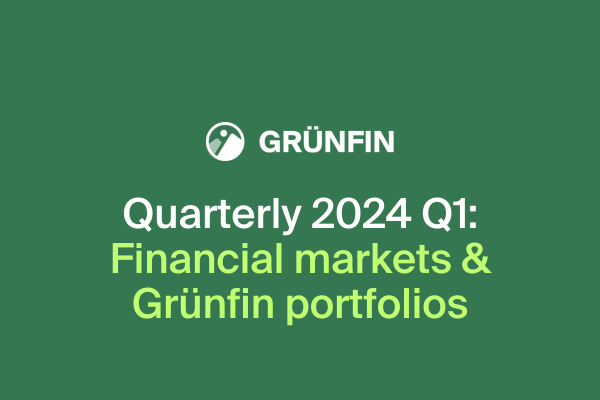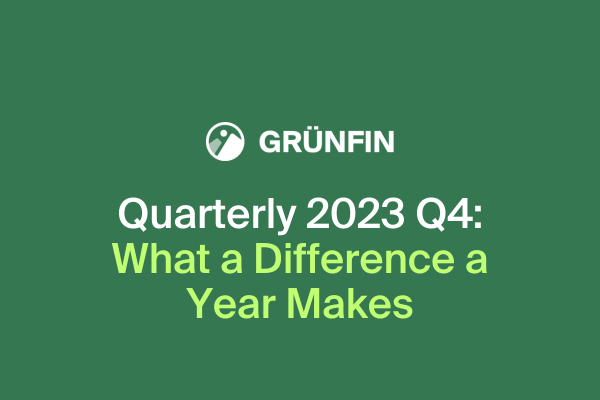Portfolio diversification means spreading an investment over several companies in different sectors. This increases your chance of profits and reduces the risk very effectively.
By diversifying your portfolio, you spread your investment across different companies. This increases your chance of profits and very effectively reduces the risk of losses. While individual companies can fail again and again, carefully compiled portfolios develop reliably positively over a long period of time.
Therefore, when we buy shares in a single company, we speak of speculation. When we buy a diversified ETF portfolio, we speak of a long-term investment. Speculating is very risky. Long-term investments instead are very safe.
The definition of diversification can be a bit dry. So, let’s look at two examples.
Negative example of investing in a single share: WireCard
Companies employ lawyers and marketing experts to present themselves attractively and to raise funds. It’s common to highlight opportunities and talk down risks.
In December 2016, WireCard presented itself as an attractive investment.
18 months later, WireCard shares had increased in value by more than 500%.
Many people saw this as proof that WireCard was indeed an attractive investment. No one had any idea of the balance sheet manipulations.
Apparently, people were investing in one of the 40 largest and most liquid companies in Germany. One of the four largest auditing firms confirmed successful transactions.
But another 18 months later, WireCard filed for insolvency and became a total loss for investors.
What can we learn from this?
Two important lessons:
- Past successes are above all one thing: past. They are not an outlook into the future.
- Even experts with access to financial records cannot predict the performance of individual stocks with any guarantee. They estimate.
Positive example of a diversified portfolio: DAX
The German stock index DAX comprises the 40 largest and most liquid German companies. Despite many years of crisis, in which it sometimes lost a great deal of value, the DAX has achieved an average return of 8.1% per year over the past 40 years.
At first glance, this seems much less spectacular than the 500% that WireCard delivered in just 18 months. At second glance, however, the advantages become clear.
Anyone who invested the sum of 1,000 euros (back then 1,955.83 DM) in the DAX on 01.01.1981 had a credit balance of 33,029.53 euros 40 years later.
The key to a successful stock investment is therefore not so much the amount invested - which can be small - but the portfolio diversification and a long term.
Why is the diversification of your ETF portfolio so important?
In a diversified portfolio, the risk is spread across several companies in different sectors. Here you can see how diversified the DAX is. From sporting goods manufacturers to medical technology, everything is represented. If one company fails - like Wirecard, for example, which was listed on the DAX - the profits of the other companies cushion the damage.
Let’s give an example.
Suppose someone invests in all the car manufacturers in the world. Then they’ve spread their money over many companies, but they are all from the same industry. It happens again and again that a whole industry gets into similar difficulties. All the companies in that industry then lose value at the same time. For example, many young people no longer have a driving license because they prefer carsharing or cycling. Cities create more space for cyclists. And the war in Ukraine has shown us how unpredictable petrol prices are.
If you have opted for a diversified portfolio, you can sit back relaxed even in crises. Losses in one sector are usually offset by gains in another sector. Even with the insolvency of WireCard and the start of the Corona pandemic, the DAX had a positive result in 2020.
Limits to portfolio diversification
There are always years when the economy deteriorates in many sectors at the same time. Let’s think of the global economic crisis in 2008 (with over 40% loss in value in the DAX) or the bursting of the dot-com bubble from 2000 to 2002 (with almost 60% loss in value in the DAX). Such figures are frightening at a cursory glance. Therefore, it is worth taking a closer look here as well.
Even though, there were eleven crises with high losses during this period, a DAX portfolio has generated more than 33,000 euros in assets from a 1,000 euro deposit over the past 40 years. So simply sitting out crises has proven its worth in the long run.

Sustainability will determine the risk in the future
Our world is changing. Scientists have been pointing out for 35 years that our planet’s resources are limited and that we need to live and act more sustainably. For 30 years, these demands largely fell on deaf ears among companies. What counted was to make as much profit as possible. The environment, employees and even customer interests were put on the back burner.
Sustainability goes beyond the pursuit of profit
Let’s use our previous examples of the car industry again. The first practical electric motor was developed in Potsdam in 1834. However, it was economically more profitable to build internal combustion engines. Internal combustion engines are complex, so there were only a few manufacturers. Little competition allows high profits. Electric motors would have been cheaper, both to buy and to maintain. But the car industry knew: what we don’t produce, no one can buy.
The car industry was not unique in its behaviour. For decades, it was common to measure the success of a company exclusively in terms of profit. In the meantime, people all over the world are feeling the effects of this pursuit of profit. The USA is ravaged by devastating forest fires several times a year. Germany is still rebuilding a year after the floods in the Ahr valley. The list can be continued endlessly.

Climate protection will be defining issue
As a result, the issue of climate protection has become decisive for elections in more and more countries. Politicians have realised that it’s much easier to force 40 million companies worldwide to act sustainably than 8 billion consumers. The sentence “what we don’t produce, no one can buy” can thus be turned into a positive one.
In the next twenty years, companies will have to get used to many new rules. The CO2 tax or the supply chain law were just the beginning. Established companies are thus facing major challenges and costs.
Let’s look at two examples to clearly describe the situation.
Volkswagen halved its value after the diesel scandal in 2015 and has not recovered from it to this day. Tesla, on the other hand, increased its value tenfold during this time with a sustainable business model.
How Grünfin supports you in your investment strategy
Our experts make it easy for you to put together your sustainable, diversified ETF portfolio. You simply determine which values are important to you:
- Climate
- Gender equality
- Health
We take care of the rest. To try it all out, you can create a free portfolio with Grünfin for as little as 1 euro per month. This way you can familiarise yourself with ETF savings plans without any risk. As soon as you feel safe, you adjust the monthly sum. Then you can sit back, relax, and let time work for you.
These could also be interesting to you

Quaterly news from Grünfin 2024 Q1
Grünfin quaterly news about financial markets and Grünfin sustainable portfolios.

Sustainability's highest standard. Grünfin is now a B-Corp
Certified B Corporations, or B Corps, are companies verified by B Lab, third party, to meet high standards of social and environmental performance, transparency, and accountability.

What a Difference a Year Makes (Grünfin Update & Quarterly Statement)
What happened in financial markets in 2023 and how we see 2024?
